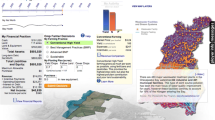Abstract
An intelligent tutoring system customizes its presentation of knowledge to the individual needs of each student based on a model of the student. Student models are more complex than other user models because the student is likely to have misconceptions. We have addressed several difficult issues in reasoning about a student's knowledge and skills within a real-time simulation-based training system. Our conceptual framework enables important aspects of the tutor's reasoning to be based upon simple, comprehensible representations that are the basis for a Student Centered Curriculum. We have built a system for teaching cardiac resuscitation techniques in which the decisions abouthow to teach are separated from the decisions aboutwhat to teach. The training context (i.e., choice of topics) is changed based on a tight interaction between student modeling techniques and simulation management. Although complex student models are still required to support detailed reasoning about how to teach, we argue that the decision about what to teach can be adequately supported by qualitatively simpler techniques, such as overlay models. This system was evaluated in formative studies involving medical school faculty and students. Construction of the student model involves monitoring student actions during a simulation and evaluating these actions in comparison with an expert model encoded as a multi-agent plan. The plan recognition techniques used in this system are novel and allow the expert knowledge to be expressed in a form that is natural for domain experts.
Similar content being viewed by others
References
Amador, F., A. Finkelstein and D. Weld: 1993, ‘Real-Time Self-Explanatory Simulation’,Eleventh National Conference on Artificial Intelligence (AAAI-93), Washington D.C., pp. 562–567.
American Heart Association: 1987,Advanced Cardiac Life Support, second edition.
American Medical Association: 1992,Journal of the American Medical Association 268(16).
Brown, J.S., A. Collins and P. Duguid: 1988,Situated Cognition and the Culture of Learning, Institute for Research on Learning report no. IRL 88-0008.
Broverman, C.: 1991,Constructive Interpretation of Human-Generated Exceptions During Plan Executions, Ph.D. Thesis, Technical Report 91-9, Computer Science Dept., University of Massachusetts, Amherst.
Brusilovsky, P.: 1994, ‘Student Model Centered Architecture for Intelligent Learning Environments’.Proceedings of the Fourth International Conference on User Modeling.
Clancey, W.J.: 1989, ‘Viewing Knowledge Bases as Qualitative Models’,IEEE Expert.
Cook, R. and J. Kay: 1994, ‘The Justified User Model: A Viewable, Explained User Model’.Proceedings of the Fourth International Conference on User Modeling.
de Kleer, J.: 1979, ‘Causal and Teleological Reasoning in Circuit Recognition’, MIT-AI-TR 529, Cambridge, Massachusetts.
de Kleer, J.: 1986, ‘An Assumption-Based TMS’,Artificial Intelligence 28, 127–162.
Doyle, J.: 1986, ‘A truth maintenance system’,Artificial Intelligence 12, 231–272.
Eliot, C. and B.P. Woolf: 1994, ‘Reasoning about the User within a Simulation-based Real-time Training System’,Proceedings of the Fourth International Conference on User Modeling.
Elzas, M.S., T.I. Oren and B.P. Zeigler (eds.): 1986,Modeling and Simulation Methodology in the Artificial Intelligence Era, Amsterdam, North Holland.
Gegg-Harrison, T.S.: 1990, ‘Zoning in on Student Models: Modeling Cognitive Potential in a Schema-Based Prolog Tutor’,Proceedings of the Second International Conference on User Modeling.
Kashihara, A., A. Sugano, K. Matsumura, T. Hirashima and J. Toyoda: 1994, ‘A Cognitive Load Application Approach to Tutoring’,Proceedings of the Fourth International Conference on User Modeling.
Katz, S., A. Lesgold, G. Eggan and M. Gordin: 1992, ‘Modeling the Student in Sherlock II’,AI and Education 3(4).
Kay, J.: 1994, ‘Lies, Damned Lies and Stereotypes: Pragmatic Approximations of Users’,Proceedings of the Fourth International Conference on User Modeling.
Kuipers, B.J.: 1986, ‘Qualitative Simulation’,Artificial Intelligence 29(3), 289–338.
Meyer, B.: 1994, ‘Adaptive Performance Support: User Acceptance of a Self-Adapting Systems’,Proceedings of the Fourth International Conference on User Modeling.
Orwant, J.: 1994, ‘Apprising the User of User Models: Interface Guidelines’,Proceedings of the Fourth International Conference on User Modeling.
Patil, R.S.: 1981,Causal Representation of Patient Illness for Electrolyte and Acid-Base Diagnosis, Ph.D. Dissertation, MIT/LCS/TR-267, Cambridge, Massachusetts.
Rissland, E.: 1978,The Structure of Mathematical Knowledge, AI-Tech-Report No 472, MIT, Cambridge, Massachusetts.
Self, J.: 1987, ‘User modeling in open learning systems’. In: J. Whiting and D. Bell (eds.),Tutoring and Monitoring Facilities for European Open Learning Environments, Amsterdam, Elsevier.
Suthers, D., B. Woolf and M. Cornell: 1992,Steps from Explanation Planning to Model Construction Dialogues, 10th National Conference on Artificial Intelligence (AAAI-92), San Jose, pp. 24–30.
Van Lehn, K.: 1988, ‘Student Modeling’. In: M. Polson and J. Richardson (eds.),Foundations of Intelligent Tutoring Systems, Hillsdale, NJ, Erlbaum, pp. 55–78.
Author information
Authors and Affiliations
Rights and permissions
About this article
Cite this article
Eliot, C., Woolf, B.P. An adaptive Student Centered Curriculum for an intelligent training system. User Model User-Adap Inter 5, 67–86 (1995). https://doi.org/10.1007/BF01101802
Received:
Accepted:
Issue Date:
DOI: https://doi.org/10.1007/BF01101802




